ABOUT
We are working on the development of technology to efficiently produce the microalga Nannochloropsis, and are processing and selling while promoting the cost reduction of commercial production.
We will promote the use of Nannochloropsis, which is rich in nutrients, as a raw material for functional foods and cosmetics, and promote contributions to the environment and society by establishing the world’s best culture and production technology.
NANNOCHLOROPSIS
The microalga Nannochloropsis is a small marine phytoplankton with a diameter of 2-5 μm.
It has the highest oil content and contains the largest amount of EPA, which is one of Omega 3, and is used in various fields.
- Scientific name
- Nannochloropsis
- Classification
- Heterokontophyta Eustigmatophyceae
- Size / Shape
- 2〜5μm / Spherical or Oval
- 61 varieties of nutrients
-
Vitamin: 12kinds
β-carotene, Vitamin B1, B2,B6, B12, Vitamin C, Vitamin E, Vitamin K, Folic acid, Pantothenic acid, Biotin, Niacin
Mineral: 11kinds
Iron, Calcium, Potassium, Magnesium, Zinc, Phosphorus, Sodium, Copper, Manganese, Iodine, Chrome
Amino acid: 18kinds
Arginine, Lysine, Histidine, Phenylalanine, Tyrosine, Leucine, Isoleucine, Methionine, Valine, Alanine, Glycine, Proline, Glutamic acid, Serine, Threonine, Aspartic acid, Tryptophan, Cystine
Unsaturated fatty acid: 10kinds
EPA, Arachidonic acid, Dihomo-gamma-Linolenic acid, Eicosadienoic acid, Gamma Linolenic acid, Linoleic acid, Oleic acid, Heptadecenoic acid, Palmitoleic acid, Myristoleic acid
Others: 10kinds
β-glucan, Chlorophyll, Lutein, Zeaxanthin, Lauric acid, Myristic acid, Pentadecanoic acid, Palmitic acid, Inositol, Lecithin
Nutrients contained
in 100g of Nannochloropsis powder
Nannochloropsis powder is a whole food that is rich in nutrients such as vitamins, minerals, β-carotene, amino acids, and unsaturated fatty acids.
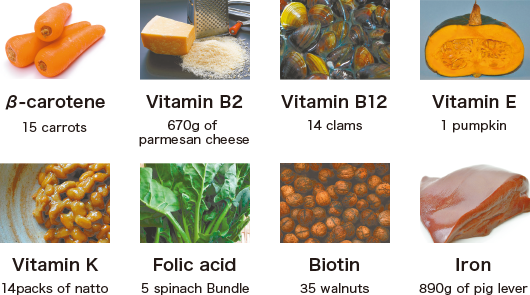
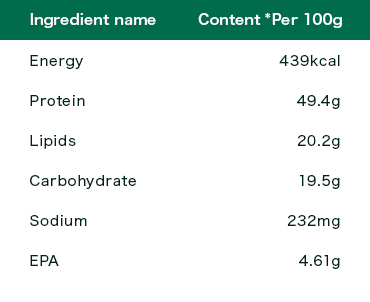
NUTRITION
EPA
It is a polyunsaturated fatty acid and is one of the essential fatty acids that are abundant in blue-backed fish such as sardines and mackerel. Inuit, which eat fish and marine mammals as a regular diet, attracted attention because they have less thrombosis and heart disease despite their high fat intake. It has the function of smoothing blood, improving blood circulation, improving hyperlipidemia, and preventing ischemic heart disease. The EPA contained in blue-backed fish was originally produced by algae and accumulated in the body of the fish through the food chain.
Nannochloropsis contains more than 3.5% EPA, which is much higher than other algae.
EPA content rate

EPA contained in Nannochloropsis is a phospholipid type
EPA and DHA contained in fish oil are glyceride type, while EPA contained in Nannochloropsis is phospholipid type. The phospholipid type has good absorption efficiency in the intestine and has the characteristic of acting effectively everywhere including the brain after being absorbed. Also, the burping does not smell like after ingesting fish oil.
CASE STUDY
Aquaculture feed
Rotifer bait in fry farming
Nannochloropsis, which is rich in EPA, is given as a feed for rotifers, which is a feed for fry farming, to enhance nutrition. In addition to rotifers, it is also used for aquaculture of juvenile shellfish and juvenile crabs.
Alternative feed
Currently, small fish such as anchovies, which can be caught in large quantities and cheaply, are used in adult fish farming, but the catch is unstable and has decreased sharply in recent years. Therefore, microalgae like Nannochloropsis, which are rich in EPA and protein, are attracting attention as alternative feeds.
Functional products
Supplements, health foods, cosmetics, pharmaceuticals, etc. that use ingredients such as EPA and palmitoleic acid of Nannochloropsis have been commercialized.
Livestock feed
As an addition of EPA / protein to livestock feed. EPA-enriched eggs can be made by adding a small amount of Nannochloropsis powder to poultry feed. It is also said that the feed with Nannochloropsis extended the spawning period of chickens.
Agriculture
The use of fertilizers containing the nutrients of Nannochloropsis has a positive effect on crops.
PRODUCTS
We produce and sell high-quality Nannochloropsis using our unique culture technology.
-
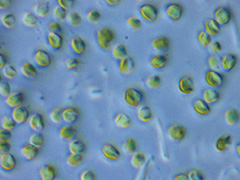
Fresh Nanno (refrigerated raw Nanno)
It is ideal for fortifying rotifers as well as juvenile shellfish and juvenile crabs. (Cultured in seawater and concentrated to 5% (weight ratio) alive)
In addition to being rich in EPA, it also contains nutrients such as amino acids and minerals. -
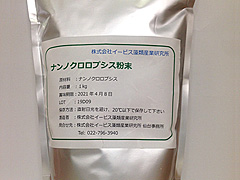
Nannochloropsis raw material powder
A superfood with a high EPA, 61 nutrients, and an amino acid score of almost 100! It contains a large amount of a precious plant-based EPA, and has an overwhelming EPA content compared to other algae. It also contains a lot of palmitoleic acid and folic acid. Not only can it be added to supplements, but it can also be added to general foods such as noodles and bread.
* The package is an aluminum bag filled with 100g or 1kg powder.
TECHNOLOGY
The Ishinomaki Plant uses the raceway method as a large-scale algae culture technology, and by circulating seawater at shallow water depths, it effectively takes in sunlight and dissolves carbon dioxide from the atmosphere to produce high-concentration algae.
Nannochloropsis grows well in relatively cold waters, grows faster when the water temperature is high, and stores more oil when the water temperature is low. It is also known that growth stops at water temperatures above 30°C.
We are working on the development of technology for efficient production by taking advantage of the temperature characteristics of Nannochloropsis and the climate of Ishinomaki City.
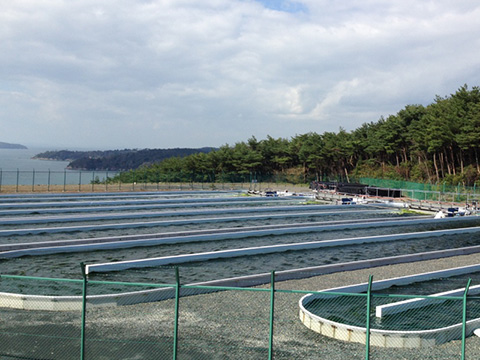
FLOW
Integrated production of Nannochloropsis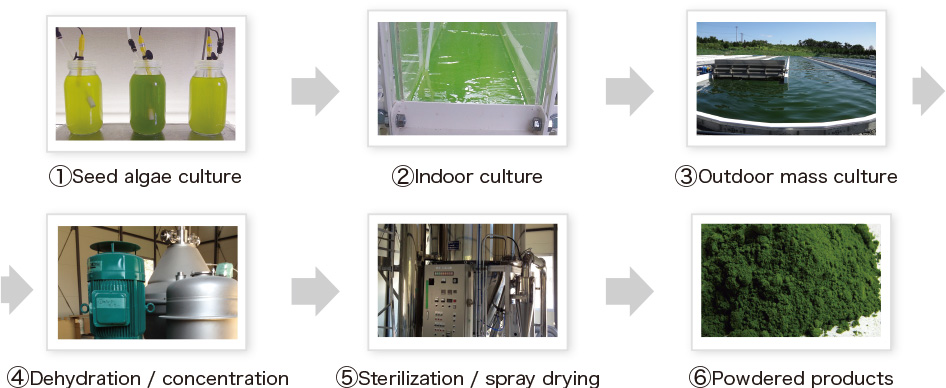
SDGs
Contribution to SDGs through the Nannochloropsis business
We will actively promote the SDGs through the Nannochloropsis business.
Expanding the base of the Nannochloropsis business also has the significance of regional creation that revitalizes the region while promoting the SDGs.

ENSURE HEALTHY LIVES AND PROMOTE WELL-BEING FOR ALL AT ALL AGES
Nannochloropsis is rich in nutrients necessary for the human body such as proteins, sugars, omega 3 fatty acids, vitamins and minerals. Now that the demand for omega 3, a plant-based protein, is increasing, it will contribute to the health promotion and vitality of people.
ENSURE ACCESS TO AFFORDABLE, RELIABLE, SUSTAINABLE AND MODERN ENERGY FOR ALL
Nannochloropsis contains about 25% lipids and can be used as a biodiesel fuel. At the experimental level, biodiesel derived from Nannochloropsis has already been prototyped. Contributes to future clean energy.
TAKE URGENT ACTION TO COMBAT CLIMATE CHANGE AND ITS IMPACTS
Nannochloropsis is an autotrophic organism that proliferates through photosynthesis. When it proliferates, it can absorb CO2, which is nearly double its own weight. At the same time, we will contribute to a carbon-free society by expanding the production of Nannochloropsis.
CONSERVE AND SUSTAINABLY USE THE OCEANS, SEAS AND MARINE RESOURCES FOR SUSTAINABLE DEVELOPMENT
Nannochloropsis has been widely used as a high-value-added aquaculture feed for decades. It improves the survival rate and malformation rate of larvae. We will liven up the aquaculture industry, respond to the decrease in fish resources, and contribute to the protection of the abundant sea.
PROFILE
- Company Name
- EBIS Algae Research Institute, Inc.
- CEO
- Amane KIMURA
- Amane KIMURA
- Company executives
-
Director: Fumihiko YOSHINO
Director: Jun ABE, Ph. D.(Science)
Auditor: Masafusa OE - Capital
- 320 million yen
Capital reserve 105 million yen
- Established
- June 20, 2018
- Access
-
Headquarters / Research Institute
1-21 Kiyosakiyama, Kugunarihama, Ishinomaki City, Miyagi Prefecture, 986-2527
Sendai office
2-1-7 Omachi, Aoba-ku, Sendai City, Miyagi Prefecture 980-0804 - Business content
-
R&D of Climate Technology
Creation and Trade of carbon credits
Research, development, experiment and engineering work of outdoor culture and processing technology for microalgae
Development, production, processing and sales of microalgae and related products
Development, production, processing and sales of biofuels and related products
Manufacture and sale of pharmaceuticals, omega 3, mushroom fungi and supplements
Import / export / sales of algae-related products and supplements
Support for social contribution projects